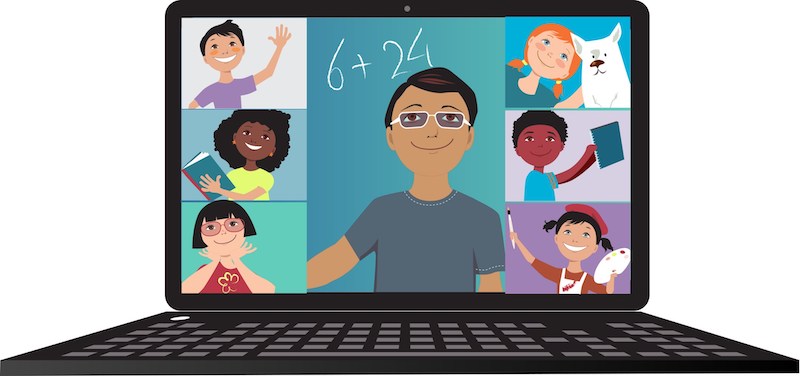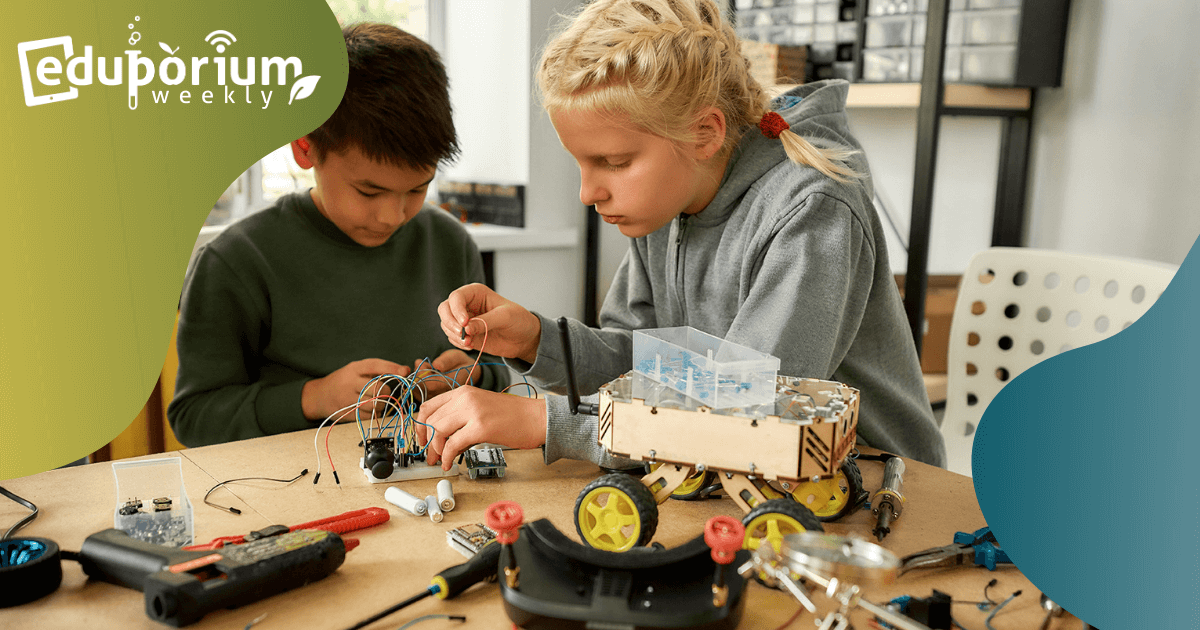We have seen far too many examples of students coming up short on having basic learning rights in recent years. While some never lost a beat, equity took a big hit amid remote learning and we learned how it is far from guaranteed. Much was also made about pandemic learning loss and how it isn't something to panic about. While all students are theoretically behind where they might be if the pandemic never happened, it's tough to imagine that those who were unable to connect to the Internet, meet with instructors, or complete assignments came out on that other side without at least a minimal disruption to their overall development. Now multiple years removed, it's still important to remember that remote learning, in particular, wasn't the same for all students—even those in the same school, grade, or class—and equitable technology access may still be a concern for many.
Equity in 21st Century Learning
For many students, remote learning spanned multiple years. Together, we learned a lot about what worked and even the percentage of children who continued learning. While the end finally arrived, some likely have not fully recovered from that time outside the classroom. Equity in remote learning involved a lot more than just connectivity—though that was definitely the main component. Disparities in reliable Internet access, of course, resulted in fluctuating learning quality, slowed intellectual growth, and stunted social development. On the other hand, keeping kids safe in a virtual world continues to necessitate equity considerations. For those who still can't access devices or the Internet, however, they could remain at risk going forward. So, for that reason, educators are now considering equity in almost every aspect of their decision making.
Attempting to create equity with connected devices.
For many education leaders, in fact, decision making quickly shifted to include equity considerations. The ultimate goal is to ensure equal opportunities and outcomes for all students. This means they must have equal access in order for this to be a reality. Obtaining individual devices for all the children in a school or district is no easy task, however. Plus, simply providing those devices isn't always enough. Connectivity is step one, but students still need to receive effective instruction. Various video lessons are, of course, one potentially effective option and that means these devices and school Internet connections also need to be capable of providing high-speed, uninterrupted learning experiences.
Other factors to consider.
Education leaders have all had to continue to ask themselves certain questions as they attempt to improve equity efforts. This includes determining the children who've been the most negatively affected and to what degree they have been impacted. If relying on technology to help eliminate learning gaps, they've also had to consider potential consequences when integrating it. Would it wind up costing too much in the long run, for example? Or, is there a chance it could quickly become obsolete? And, of course, equitable access to that particular technology should also be considered. If it doesn't help to advance equity, it's not really an impactful solution. Starting with ensuring efficacy and creating access, teachers can then move towards enjoying impactful results that ensure equity for all students.

Technology Access Fosters Greater Inclusion
In pre-pandemic times, we knew that different students had different educational opportunities. Whether it was based on their locations, race, or socioeconomic factors, not all things were equal. When schools shut down, however, the divide expanded. The biggest problem that resulted was that educational opportunities were essentially nonexistent without equitable access to technology. Technology is often seen as a great equalizer in education, but ensuring equity in access became much tougher. In an era in which technology remains a cornerstone of teaching and learning, this importance can not be understated. Even a year into remote learning, educators still struggled to close access gaps and the effects of that will likely persist.
Equity and access are just the start.
Internet access has become the biggest contemporary lifeline to learning. Along those lines, so has access to reliable devices. There are more options, however, when it comes to devices, making Internet access the central factor. Some children, for example, might be able to get by with using a smartphone as opposed to a super fast computer. This access is critical for ensuring that every student can experience a future-ready education. And, this equity in educational experiences should be a right for every single one of them. What it comes down to, however, is technology being a force that nurtures true equity—not stands in the way of it. Beyond enabling children to complete assignments, technology tools can also open up new realizations, points of view, and perspectives for students—hugely valuable elements of 21st century learning.
Enabling student voice.
As the 'great equalizer,' technology is often viewed as the single most important tool in giving all children a voice. Technology allows teachers to supplement curricular content with engaging media. Without this, that instruction can feel a bit antiquated. In today's classrooms, especially, technology can truly help every child feel like they have a voice. Without it, many teachers may not know what they're feeling, how children have reacted to new topics, or whether or not they're struggling. Using what they know, students can then share their thoughts and receive personalized feedback. If they don't get this opportunity, their experiences are much less fruitful. And, as we've seen, students need equity in education in order to exercise that voice.
What to Recognize when Addressing Equity
It remains challenging for educators to provide fully equitable learning experiences for every child. Part of this has to do with some students needing extensive and specialized support. Another reason is that, due to occasional challenges with connectivity, teachers simply have to make do with what they have. With all children now back in school buildings, equity concerns from remote learning seem to be behind us. At the same time, however, education officials had to work extremely hard to assess and address their students' needs upon returning. Education and district leaders did all they could to ensure students won't continue facing access-related hurdles after that huge period of disruption. As such, acknowledging that there was definitely a lack of equity and helping any students who continue to be vulnerable is still a priority.
Using data to address student needs.
Whether all educators were aware of tech-related equity issues before the pandemic or not, many of those revelations were new (and startling) to some. Although they learned to continue educating on the fly, equity concerns became much more common and, like we said, are now closer to the front of the minds of many educators. Even with students present for all of their class meetings, there's also engagement to consider. And, that's just one more element of contemporary learning that's not intrinsically equitable. One strategy that educators or administrators can employ is to capture as much data as possible. Knowing how much students participate and who's contributing to discussions is super valuable. On the other hand, if some kids don't feel comfortable doing so, teacher-facilitated equity can be tougher to achieve. So, making sure they're comfortable in the classroom has another potential tie to overall success when you consider equity.
Creating equity through action.
Surveys are often effective for capturing key data points. These may include inquiries into student Internet access, device availability, or Internet strength. Even though the pandemic is over, knowing this information is still important for teachers. This can inform instructional practices, assignments, and even conversations between them and their students. Besides that, educators should try to keep their definition of an equitable learning environment in mind at all times. This may mean actively trying to engage certain children to make sure they're involved. Positive reinforcement can be helpful here, sharing words of praise that give children confidence whenever possible. Involving all students can also promote equity that goes beyond education. If kids see peers of all races, backgrounds, and genders being treated equally, it can only help to enhance their own views of equality and equity.

Creating a Culture of Equity
Much has been made about equity in education over the last few years and rightfully so. Honestly, many of these concerns and the steps taken to address them were frankly a bit overdue. Complete equity, however, must involve across-the-board inclusion for all students. When all students feel fully welcomed within the classroom—in-person and even virtually—a much greater sense of equity will permeate that atmosphere. A school culture that's based on equity and inclusion can help educators create an environment for each and every one of them. This, most often, begins with educators and school administrators. They each must buy in to advancing equity and inclusion and set examples for their students in the process.
Ensuring students feel valued.
Advancing equity often starts with ensuring all students are treated equally or with culturally responsive efforts. Like we've said, this means equal participation in activities and equal validation for all children from their teachers. Even though students all have different sets of abilities and strengths, we cannot understate how important it is to treat each one of them equally. They will quickly start to adopt their own views on the importance of equitable opportunities and form an understanding that they are no better or worse than any of their classmates. Instilling this belief and sense of pride in them is also a big part of building schoolwide cultures based on the same principles.
Why intent matters.
To help every student to feel fully included, educators often need to be clear. Their language, attitudes, and actions are all things students constantly notice. There are many different reasons educators may decide to focus on advancing more equitable opportunities for all children. It may be for improving grades, increasing college enrollment, and, especially today, making sure that every child has access to educational resources and opportunities. Sometimes, simply feeling more included can even help kids overcome some of the key barriers they face. It often starts with teachers using the right kind of language in creating a more inclusive school culture. Using inclusive terms can go a long way with students. Beyond that, providing any unique accommodations that they need will typically help them feel more at ease.
Addressing Equity Concerns in Today's Learning
Whether we all had to experience remote learning or not, the fact is that there were equity disparities that resulted and some still remain. It turns out they're a common problem for countless students and parents around the country. The first thing education leaders had to do was acknowledge that these inequities do exist. Being able to clearly define and see them was an important first step in reducing them. There's also the fact that some classes or subjects aren't delivered to all children in the same ways. Hands-on STEAM classes, for example, whether they're held in a lab or makerspace, aren't nearly as extensive or effective for some underserved students. So, in many cases, these types of learning experiences do evade certain kids as teachers struggle to facilitate equitable and inclusive opportunities across all schools and all areas.
Remembering that access is sometimes unattainable.
Even with so many elements to present-day instruction, teachers can still prioritize inclusion. Beyond just technology, students sometimes need additional support and the best way teachers can provide that is to communicate with them. Also, when designing lessons, teachers need to keep in mind that some students may not work well with certain technologies, like laptops or tablets. Some might be using mobile phones to access media supplements or assignments. Or, when homework comes into play, just remember that some kids might not have reliable home Internet. Plus, even if they do have Internet access, there's a chance that it won't support streaming video files or larger pieces of content too well. While we'd love if every child had high-speed Internet access, we know this isn't true. And, as such, it's unfair for some students to progress as intended if others are missing out because of factors they cannot control.
Every situation is unique.
To maximize equity in learning, flexible options offer a good start. Assignments with multiple access points are ideal, and allowing for asynchronous completion is often equally helpful. This includes possibly utilizing mobile-friendly resources to accommodate those students using mobile devices. Also, the right balance of synchronous and asynchronous learning could help. In rare cases, children may have to miss school and would only be able to complete work during certain windows, meaning that synchronous learning would be impossible for them. Each situation is potentially unique and students may need extra assistance to ensure they're getting the instruction they need. If you've had issues with addressing equity since the pandemic or have found a creative way to overcome it, we'd love to hear. Send us a message with your story and we'll share it with our community.
For the latest EdTech, STEM, and 21st century education news, follow us on Twitter and Instagram. Like us on Facebook, too, or sign up for our newsletter for our latest product announcements and offerings. If you have an idea for an Eduporium Weekly theme, send us a message on social media or comment below.



